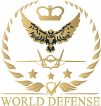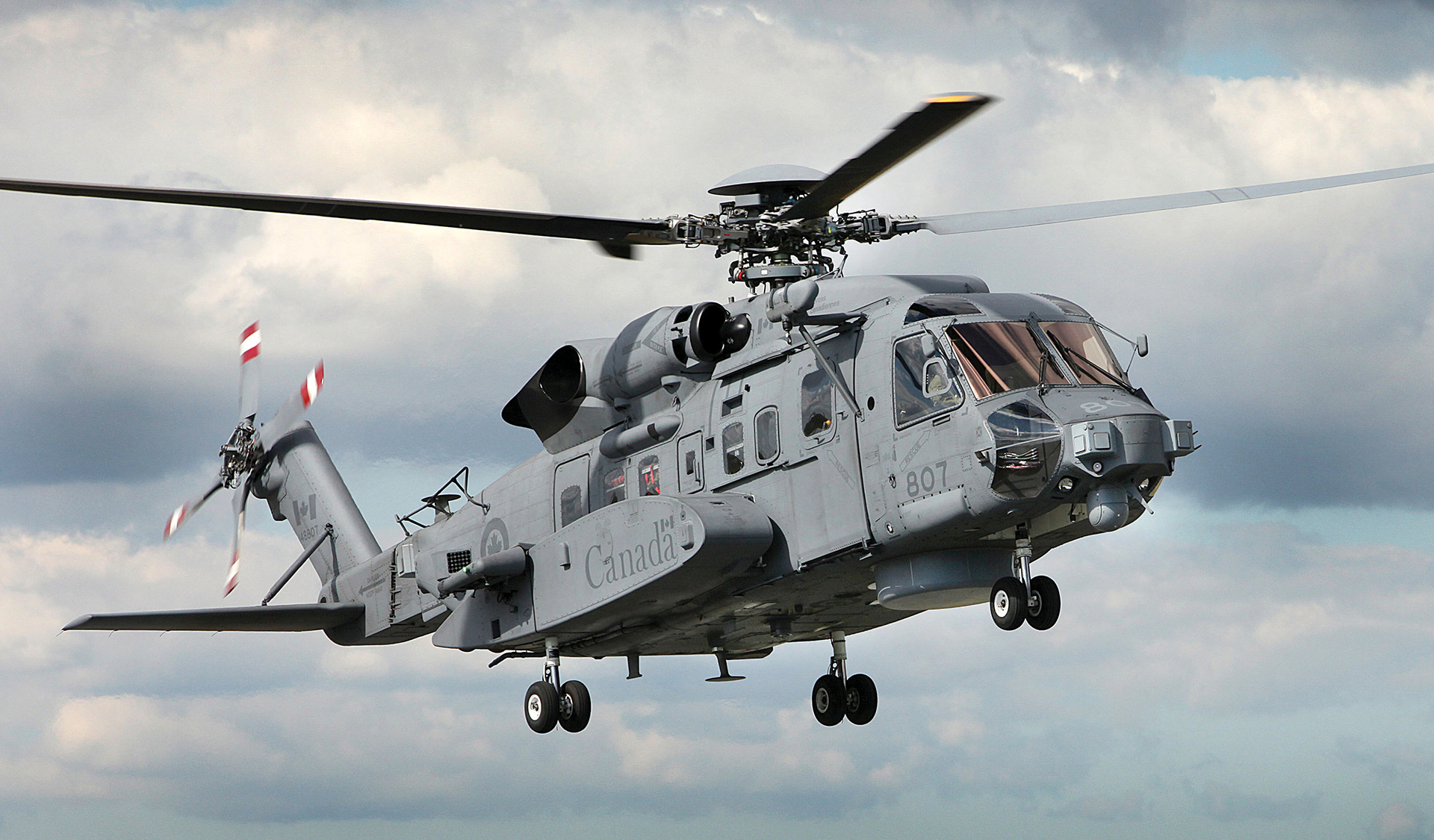Changing the guard: Canada transitions from Sea King to Cyclone
Canada’s programme to replace its ageing Sea King maritime helicopters with the Cyclone has been a long and protracted one. Gareth Jennings explores the key issues and milestones to date
When Canada first signed up for 28 Sikorsky S-92-derived CH-148 Cyclones to replace its ageing Sikorsky SH-3A (CH-124A/B in Canadian service) Sea King utility and anti-submarine warfare (ASW) helicopter fleet, deliveries that were due to begin in 2008 did not in fact take place until 2015.
Ordered at a cost of CAD1.9 billion (USD1.4 billion), the Cyclone helicopters developed for Canada have been mired in technological and programmatical problems that have seen Sikorsky and the Canadian government involved in a long-running dispute over the helicopter’s performance.
With the Royal Canadian Air Force (RCAF) agreeing to accept an initial batch of six Cyclones in interim Block 1 configuration (suitable for aircrew training for operational testing in preparation for operational service), the service is now on the way to finally standing-up the platform with the operational Block 2 configuration at Canadian Forces Base (CFB) Shearwater in Nova Scotia.
Speaking in 2018, the head of the Cyclone fleet and Commander of 12 Wing, Colonel Sid Connor, noted the background to the Cyclone procurement, the efforts already undertaken to constitute the Cyclone, and those that still remain before full-operating capability (FOC) can be achieved.
“In the Canadian Armed Forces anything that flies is the domain of the RCAF, and so the RCAF provides air support to the Royal Canadian Navy [RCN]) and the Canadian Army. The RCAF has been operating the Sea King for 55 years – the very same helicopters. Its mission set is operating from ships for anti-submarine warfare [ASW], anti-surface vessel warfare [ASuW], intelligence, surveillance and reconnaissance [ISR], over-the-horizon targeting, search and rescue [SAR], boarding party support, and utility. That’s where we are coming from, and where we are going is the Cyclone. The idea is to go out and accomplish the same mission sets, but of course we will be doing everything differently from before,” Col Connor explained.
Enhanced capabilities
As the colonel noted, aside from their respective ages the primary difference between the outgoing Sea King and the incoming Cyclone is that the latter is a fully fly-by-wire helicopter, “a little bit heavier but pretty much the same dimensions”. The cruise speed has increased from 90 kt to 135 kt, and the Cyclone can be equipped with multiple configurations in the back of the aircraft depending on the mission to be flown.
“With a full mission system we can take six passengers with the four-person crew; we can fully gut the back-end and take 22 passengers; or we can come up with a hybrid configuration where we take some of the bulkier ASW equipment out to take a dozen-or-so passengers and still have a very capable ISR platform,” he said. “As well as operating from a ship, we also have the ability to operate autonomously away from the vessel, which means that you have to be able to take everything with you, and the mission that you brief is probably going to change a couple of times and not end up being the mission that you execute,” he added.
In terms of the mission systems, Col Connor noted that the CH-148 has dramatically improved the RCAF’s maritime helicopter force ability to look out, either in terms of the aircraft’s electro-optical/infrared (EO/IR) sensor or with its active or passive sonar systems and radar. “And now, we are also network-connected, whereas before we were totally reliant on voice communications,” he said. “In the Sea King-days, we would be pulling for information; you did what you had to do to get the information you needed to do your mission. Now, the information is coming to us in droves, and while some of it relates to your mission, you also get things that relate to other peoples’ missions, meaning you can become part of the sensor-shooter equation for a totally different mission set that is going on at the same time. This is new to us and something that we are now bravely jumping into,” he said.
The differences in performance between the Cyclone and Sea King are being felt in just about every aspect of the new helicopter’s operation, Col Connor noted, even down to flying it on and off a ship. “Even relatively simple things like taking-off from and landing on a ship are different. With the Sea King, we were focused on the pitch and roll of the ship to determine safe parameters. With the Cyclone we have found that it isn’t really about the pitch and the roll, but the acceleration of the deck. This means we can operate it in heavier seas, up to about Sea State 6.”
Canada’s programme to replace its ageing Sea King maritime helicopters with the Cyclone has been a long and protracted one. Gareth Jennings explores the key issues and milestones to date
When Canada first signed up for 28 Sikorsky S-92-derived CH-148 Cyclones to replace its ageing Sikorsky SH-3A (CH-124A/B in Canadian service) Sea King utility and anti-submarine warfare (ASW) helicopter fleet, deliveries that were due to begin in 2008 did not in fact take place until 2015.
Ordered at a cost of CAD1.9 billion (USD1.4 billion), the Cyclone helicopters developed for Canada have been mired in technological and programmatical problems that have seen Sikorsky and the Canadian government involved in a long-running dispute over the helicopter’s performance.
With the Royal Canadian Air Force (RCAF) agreeing to accept an initial batch of six Cyclones in interim Block 1 configuration (suitable for aircrew training for operational testing in preparation for operational service), the service is now on the way to finally standing-up the platform with the operational Block 2 configuration at Canadian Forces Base (CFB) Shearwater in Nova Scotia.
Speaking in 2018, the head of the Cyclone fleet and Commander of 12 Wing, Colonel Sid Connor, noted the background to the Cyclone procurement, the efforts already undertaken to constitute the Cyclone, and those that still remain before full-operating capability (FOC) can be achieved.
“In the Canadian Armed Forces anything that flies is the domain of the RCAF, and so the RCAF provides air support to the Royal Canadian Navy [RCN]) and the Canadian Army. The RCAF has been operating the Sea King for 55 years – the very same helicopters. Its mission set is operating from ships for anti-submarine warfare [ASW], anti-surface vessel warfare [ASuW], intelligence, surveillance and reconnaissance [ISR], over-the-horizon targeting, search and rescue [SAR], boarding party support, and utility. That’s where we are coming from, and where we are going is the Cyclone. The idea is to go out and accomplish the same mission sets, but of course we will be doing everything differently from before,” Col Connor explained.
Enhanced capabilities
As the colonel noted, aside from their respective ages the primary difference between the outgoing Sea King and the incoming Cyclone is that the latter is a fully fly-by-wire helicopter, “a little bit heavier but pretty much the same dimensions”. The cruise speed has increased from 90 kt to 135 kt, and the Cyclone can be equipped with multiple configurations in the back of the aircraft depending on the mission to be flown.
“With a full mission system we can take six passengers with the four-person crew; we can fully gut the back-end and take 22 passengers; or we can come up with a hybrid configuration where we take some of the bulkier ASW equipment out to take a dozen-or-so passengers and still have a very capable ISR platform,” he said. “As well as operating from a ship, we also have the ability to operate autonomously away from the vessel, which means that you have to be able to take everything with you, and the mission that you brief is probably going to change a couple of times and not end up being the mission that you execute,” he added.
In terms of the mission systems, Col Connor noted that the CH-148 has dramatically improved the RCAF’s maritime helicopter force ability to look out, either in terms of the aircraft’s electro-optical/infrared (EO/IR) sensor or with its active or passive sonar systems and radar. “And now, we are also network-connected, whereas before we were totally reliant on voice communications,” he said. “In the Sea King-days, we would be pulling for information; you did what you had to do to get the information you needed to do your mission. Now, the information is coming to us in droves, and while some of it relates to your mission, you also get things that relate to other peoples’ missions, meaning you can become part of the sensor-shooter equation for a totally different mission set that is going on at the same time. This is new to us and something that we are now bravely jumping into,” he said.
The differences in performance between the Cyclone and Sea King are being felt in just about every aspect of the new helicopter’s operation, Col Connor noted, even down to flying it on and off a ship. “Even relatively simple things like taking-off from and landing on a ship are different. With the Sea King, we were focused on the pitch and roll of the ship to determine safe parameters. With the Cyclone we have found that it isn’t really about the pitch and the roll, but the acceleration of the deck. This means we can operate it in heavier seas, up to about Sea State 6.”


